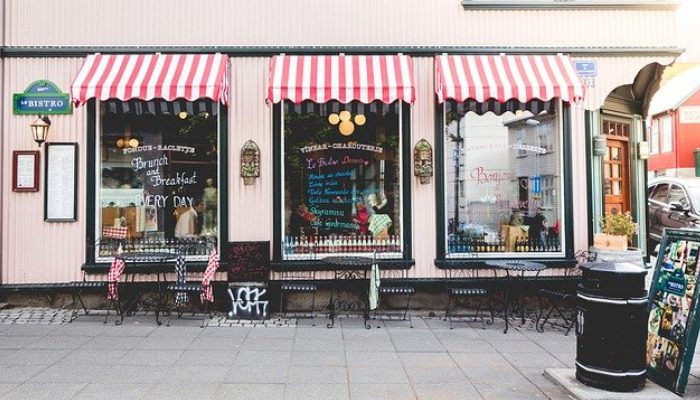With effective vaccines widely available throughout the United States, many business owners and customers are transitioning into a new COVID-19 phase that’s closer to what they remembered before the pandemic.
Here are some proactive things you can do to increase the chances of your business remaining strong and relevant as people navigate the post-COVID world.
Consider Launching a Chatbot
Retail chatbots can provide people with instant access to your business, providing the content they need to improve their product research and purchasing decisions. Think about how you could use a chatbot to show customers that your business is there to provide the information and advice they need.
David’s Bridal recently upgraded its chatbot to provide 24/7 live support for people shopping for wedding attire. This decision is part of the company’s ongoing efforts to focus on digital channels. Since that endeavor began, more than 95% of the company’s customer interactions are reportedly digital ones.
People using the chatbot can get live style advice, book in-store appointments or even pay for items. Perhaps it’s not feasible for you to provide a chatbot where representatives are available to help customers at any time. Even so, a chatbot can help you stay connected with customers and monitor what their most frequently asked questions are, even outside of business hours.
Explore Frictionless Shopping Experiences
Most people didn’t like waiting in checkout lines before the pandemic, and many retailers adapted to reduce the time customers spent doing that at the height of COVID-19. Having shoppers near each other for too long could make it easier for the virus to spread.
Once shoppers embraced new shopping procedures, many found they’d like them to continue. Amazon Fresh recently opened its first cashier-free grocery store in London. Home improvement store Lowe’s also announced plans for the Canadian market involving lockers where people go to stores and pick up their goods. Shoppers have seven days to pick up merchandise after getting notified that it’s available.
The solution used at Lowe’s uses a touch-sensitive panel and Bluetooth technology to help people grab their goods. However, your approach could be significantly less high-tech while remaining convenient. For example, you could have a staffed desk where people go after reserving items online. Asking customers to indicate their preferred time slot would prevent that area from getting too crowded.
Choose Appropriate Lighting
Succeeding as a retailer in the post-COVID world means creating an inviting environment where people love to shop and feel eager to return. Lighting can be significant for creating that setting. Besides emphasizing a particular mood, the lights used in a retail outlet can help you show off products.
For example, using contrast backlighting with adjustable LEDs encourages customers to look at full shelves of goods, reducing possible distractions. You might also opt for decorative lighting to emphasize brand elements. A vintage spotlight or a set of string lights could give some of the all-important aspects of memorable shopping experiences.
Besides thinking of what kinds of lighting your customers need and want, stay aware of how lighting could make things easier for your staff members. The right lighting in the correct places could help them do detail-oriented tasks faster and may even prevent accidents.
Provide Outstanding Customer Service
Fantastic customer service is often a defining factor that urges someone to shop at a certain retailer rather than others. Many people will spend more and take longer trips to give retailers their business if they know the staff at those stores treat customers well.
Excellent customer service encompasses numerous aspects, from staff members giving people friendly greetings when they arrive to offering to special-order an item. It also concerns workers displaying behavior that shows they’re eager and willing to do anything in their power to take care of customers.
Customer service also means showing transparency. Suppose you’re selling an item that has a per-shopper limit due to high demand. In that case, post that information in various, prominent places. Then, it’s less likely that people will try to purchase too many and only learn they can’t after reaching the checkout. Take a similar approach with your returns policy to minimize confusion.
Capitalize on a Local Approach
Many people shopped closer to home during the pandemic. Sometimes, that was because authorities discouraged non-essential journeys. If people could get what they needed only five miles from home, they often preferred that option. It let them stock up, then return to sheltering in place.
Emphasizing your local connections could prove crucial in post-pandemic times, too. A study from neighborhood social site Nextdoor found that 72% of people polled anticipated visiting local businesses more often after the COVID-19 situation ended.
If it’s applicable, specifically call out your local roots in marketing methods. Suppose you’re a furniture retailer based in Nashville, Tennessee. Then, you might say, “We’re proud of our 60-year history of being Nashville’s top choice for beautiful, high-quality home and office essentials.”
Otherwise, explore how you could support the local community. That might mean sponsoring an area for an ongoing litter-cleanup project, donating to schools or encouraging your staff to volunteer at a food bank. People like to see that retailers are doing more in an area than merely profiting. You can stand out from the crowd through community commitments.
Maintain Flexibility
In addition to following these tips, remember that it’s too early to say for sure which COVID-19 shopping trends will persist in the post-pandemic world. Plus, some people may decide they no longer want to engage in all of the same retail activities they did before the pandemic.
These possibilities mean that it’s vital to stay flexible and keep an eye on emerging retail trends that could affect your operations. Being aware and responding quickly to those changes should make you more resilient, no matter what’s on the horizon for the retail sector.


































